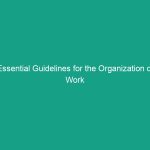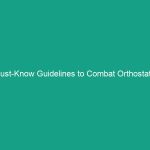Introduction
Good morning team! Today, we’re going to talk about a vital topic that affects each one of us here: Essential OSHA – QuickCards: Must-Know Guidelines for Workplace Safety. Understanding these guidelines is crucial for creating a safe working Environment and protecting not just ourselves, but our coworkers as well.
Why is this important? Well, every day we face various Hazards, and knowing the correct Safety protocols can prevent accidents and injuries. So, let’s dive in and equip ourselves with the knowledge we need to stay safe on the job!
Understanding Essential osha – QuickCards
The Essential OSHA – QuickCards are concise, easy-to-read references that outline crucial Safety Guidelines provided by the Occupational Safety and Health Administration (OSHA). These QuickCards cover a variety of topics, from Fall Protection to hazardous material handling, making them a fundamental resource for Workplace Safety.
Understanding these guidelines is essential not only for compliance but also for fostering a culture of Safety within our organization. Many employees might think these guidelines are just formalities, but ignoring them can lead to serious consequences, including injuries or even fatalities.
Key Hazards, Risks, and Safety Considerations
Let’s discuss some specific hazards and challenges associated with Workplace Safety:
- Slips, Trips, and Falls: These are some of the most common workplace accidents. Wet floors, uneven surfaces, and cluttered walkways can create serious risks.
- Electrical Hazards: Working with or near electrical equipment can lead to shocks or Fires if proper Precautions aren’t taken.
- Hazardous Materials: Exposure to chemicals can cause health issues if not handled correctly. Knowing how to read labels and use Personal Protective Equipment (PPE) is crucial.
Ignoring safety protocols can lead to injuries that affect not only the individual but the entire team. For instance, a simple slip can result in a worker being out for weeks, increasing the workload for others and affecting morale.
Best Practices, Procedures, & Actionable Advice
Now, let’s go over some Best Practices to ensure we’re all working safely:
- Maintain Clean Workspaces: Keep your work area tidy to minimize trip hazards. Regularly check for and clean up spills immediately.
- Use PPE: Always wear the appropriate Personal Protective Equipment for your tasks. This includes gloves, helmets, goggles, and hearing protection as needed.
- Follow Lockout/Tagout Procedures: Before servicing equipment, ensure it is properly shut down and locked out to prevent accidental start-up.
For example, consider a real-life incident where an employee suffered a severe injury due to a lack of proper PPE while handling chemicals. This could have been avoided with proper Training and adherence to safety protocols.
Regulations, Standards, and Compliance
It’s important to be aware of the Regulations and Standards set forth by OSHA and other governing bodies. Compliance with these regulations is not only a legal obligation but also a moral one, ensuring the safety of all employees.
For instance, OSHA 29 CFR 1910 outlines general industry safety and health regulations. Familiarizing ourselves with these standards helps us understand our responsibilities and the necessary actions we must take to comply.
Employee Engagement & Discussion
Now that we’ve covered essential safety guidelines, let’s open the floor for discussion. Think about your experiences:
- What safety challenges have you encountered related to the guidelines we discussed today?
- How can we improve our safety practices in our daily operations?
Your input is invaluable in creating a safer work environment. Let’s brainstorm and come up with solutions together!
Conclusion & Key Takeaways
In summary, understanding and implementing the Essential OSHA – QuickCards is crucial for maintaining Workplace Safety. By recognizing hazards, adhering to safety guidelines, and actively participating in safety discussions, we can all contribute to a safer work environment.
Remember, safety is everyone’s responsibility. Thank you for your attention today, and let’s commit to prioritizing safety in everything we do!


